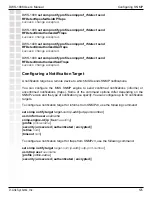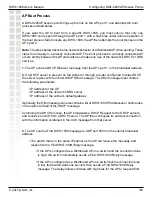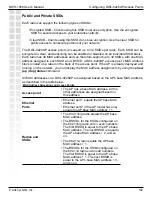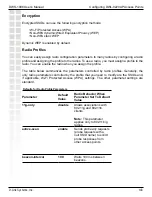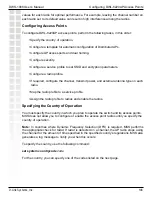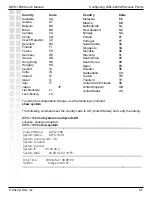
135
DWS-1008 User’s Manual
D-Link Systems, Inc.
Configuring DWL-8220AP Access Points
Resiliency and Dual-Homing Options for APs
APs can support a wide variety of resiliency options. Redundancy for PoE, for data link
connections and for DWS-1008 services can be provided to the AP.
• PoE redundancy - On AP models that have two Ethernet ports, you can provide
PoE redundancy by connecting both ports to PoE sources. PoE can come from a
directly connected DWS-1008 or a PoE injector. Dual-homing support for PoE is
automatically enabled when you connect both AP Ethernet ports.
• Data link redundancy - You can provide data link redundancy by connecting both
Ethernet ports directly to one DWS-1008, two switches, an intermediate Ethernet
switch, or a combination of DWS-1008 and Ethernet switch. If an intermediate
Ethernet connection is used, you also need a Distributed AP configuration on an
DWS-1008 somewhere in the network. Dual-homing support for data link redundancy
is automatically enabled when you connect both AP Ethernet ports.
• DWS-1008 redundancy - You can provide redundancy of DWS-1008 services by
dual-homing the AP to two directly connected switches; or by configuring a
Distributed AP configuration either on two or more indirectly connected switches,
or on a combination of a directly connected DWS-1008 and one or more indirectly
connected switches. To provide DWS-1008 redundancy on a DWL-8220AP model
that has only one AP port, configure a Distributed AP connection on two or more
indirectly connected switches.
Bias
On an switch, configurations for APs have a bias (low or high) associated with them. The
default is high. A switch with high bias for a DWL-8220AP is preferred over an DWS-1008
with low bias for the AP.
If more than one switch has high bias, or the bias for all connections is the same, the switch
that has the greatest capacity to add more active APs is preferred. For example, if one
switch has 50 active APs while another switch has 60 active APs, and both switches are
capable of managing 80 active APs, the new AP uses the switch that has only 50 active
APs.
Note:
Bias applies only to switches that are indirectly attached to the AP through an intermediate
Layer 2 or Layer 3 network. An AP always attempts to boot on AP port 1 first, and if a switch
is directly attached on AP port 1, the AP boots from it regardless of the bias settings.





